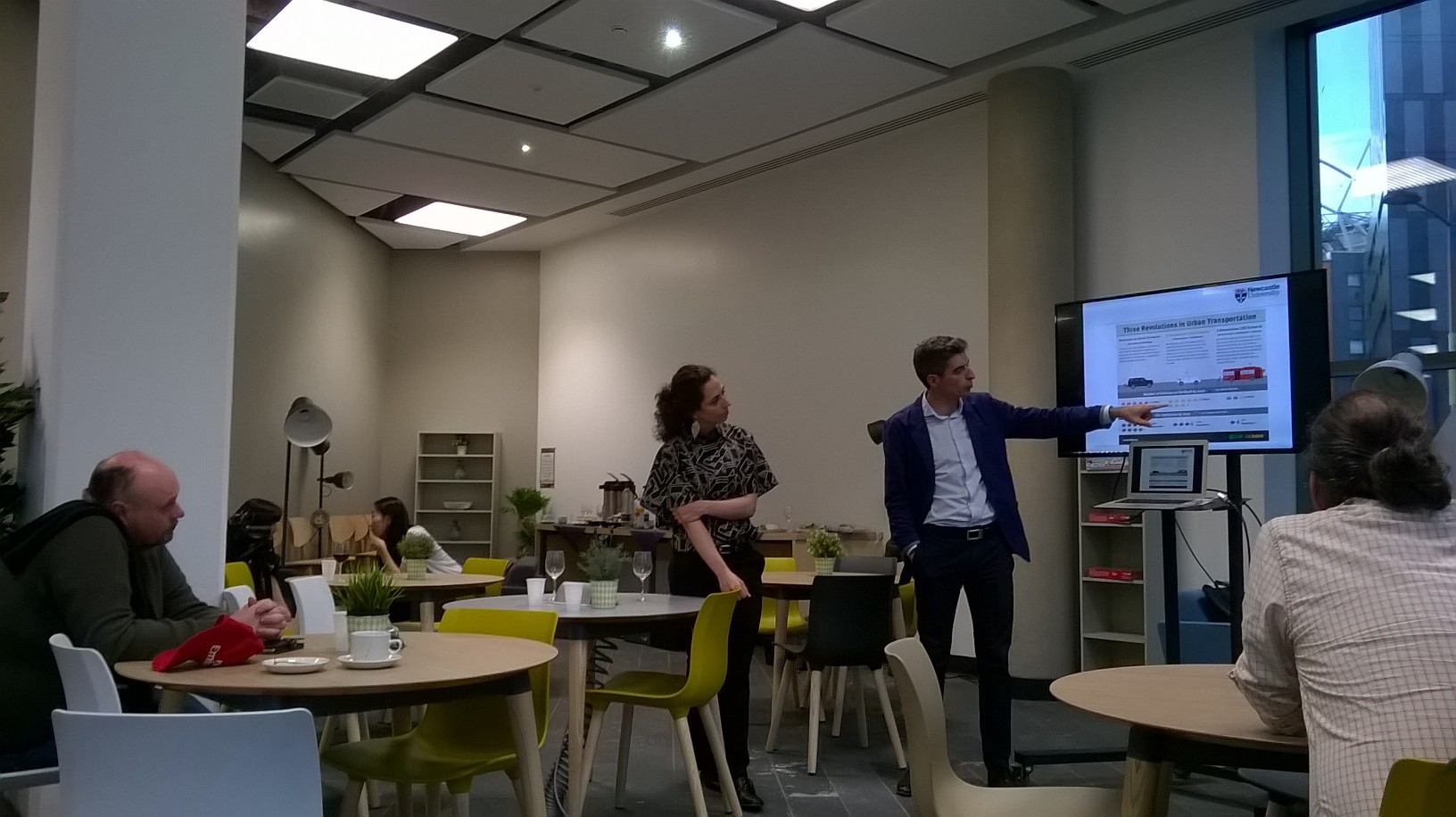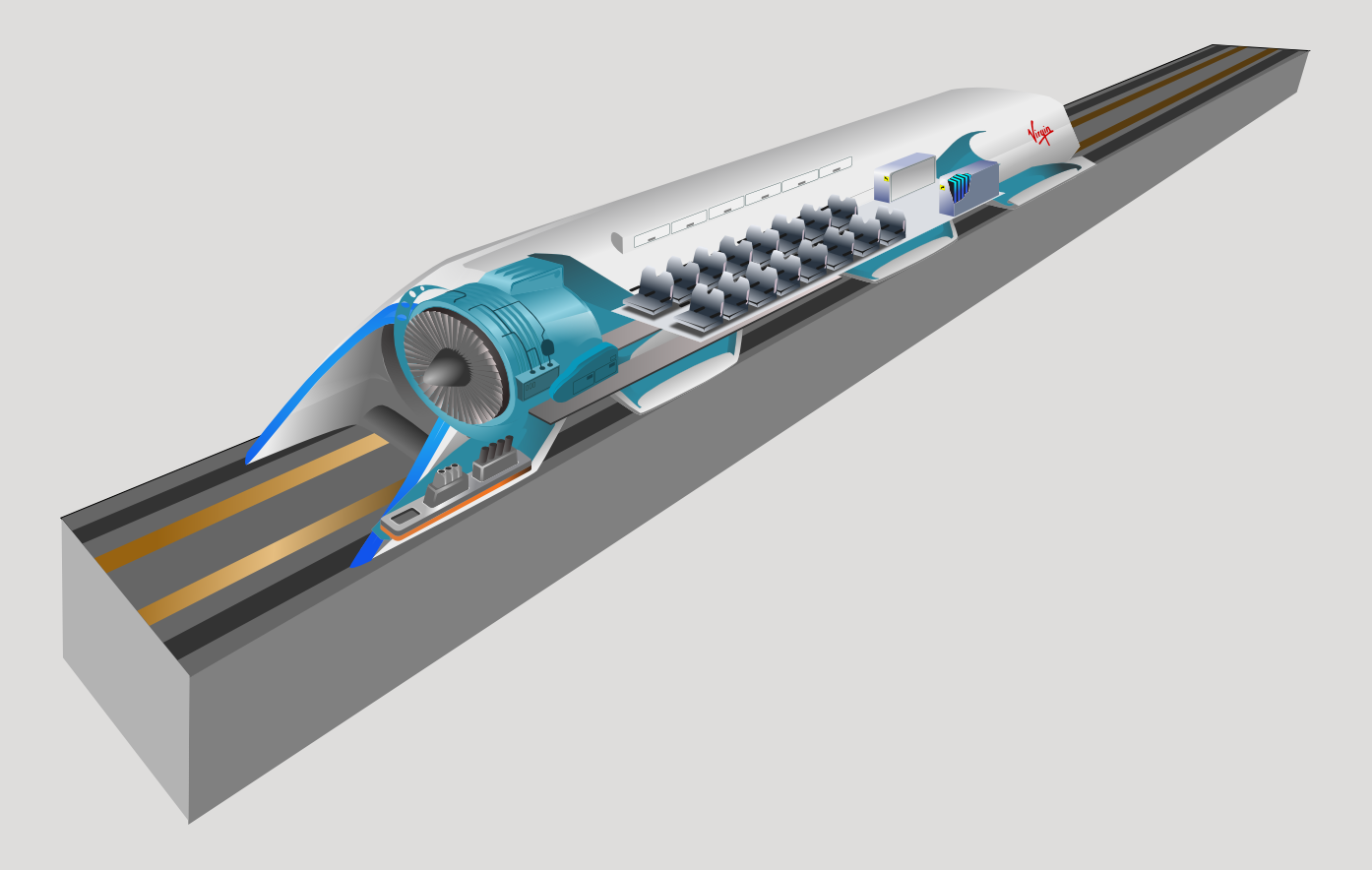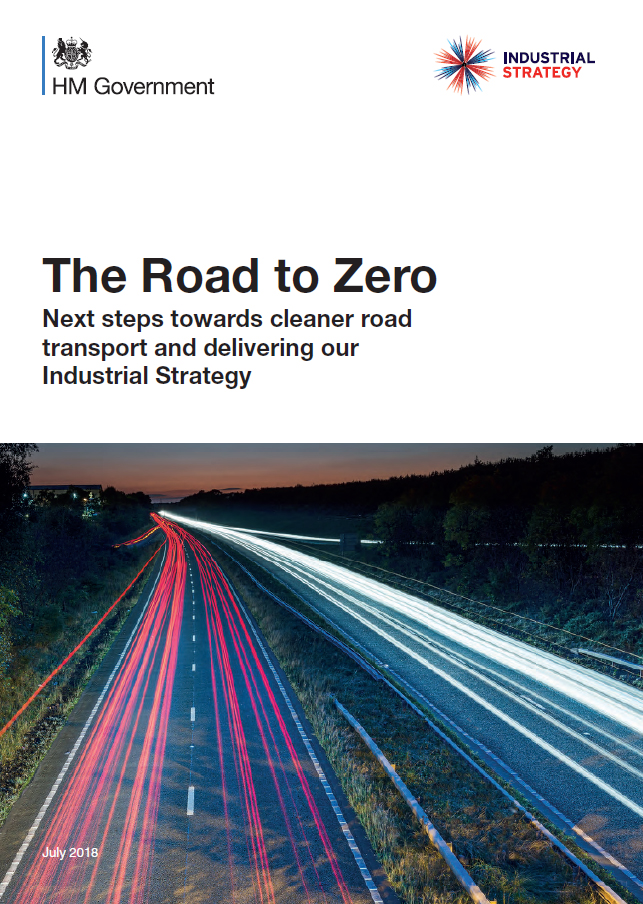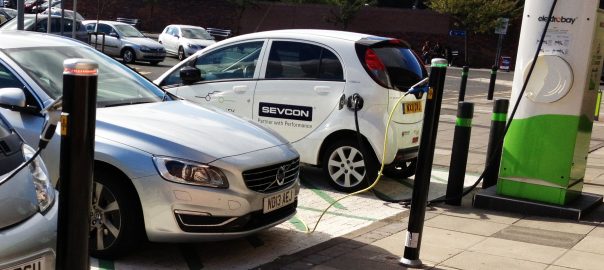The future of transport was the topic of discussion at a Café Scienitifique in the Urban Sciences Building at Newcastle Helix, part of a series inspired by the 2018 Great Exhibition of the North in Newcastle. Are we fast forwarding into a future of efficient and sustainable transport for all, or are we stuck in a combustion powered dystopia for the foreseeable future with climate change nipping at our heels?
Cities are implementing smart traffic lights, rapid EV charging points, testing autonomous vehicles and flying taxis. Countries are promising to phase out internal combustion engines by 2040 or sooner. In response to this ambitious policy, many of the vehicles on the road could be electric.
Transport by rail will change, becoming faster, more sustainable and (hopefully) more affordable. With 60% of all current travel taking place in urban areas rail is likely best placed for super mass transit systems.

The remit of the Helix is to make our lives smarter, healthier and sustainable, combining cutting edge university research with business, industry and local communities. It is transforming a former brownfield located in the centre of Newcastle into a thriving hub for commercial enterprise, residential development, urban science and innovation. Transport is very much part of its vision for the future.
The USB itself is what engineers call a ‘building-as-a-lab’ and the entire building is instrumented with about as much sensing equipment as the USS Enterprise. Plus some of the work on EVs, including vehicle-to-grid technology (V2G), will be tested at the USB as it could likely become a valuable component of future energy systems.
According to Myriam Neaimeh, who is a researcher on EVs and V2G at Newcastle University, EVs are not simply a means to an end for traveling from point A to point B, but are also an asset for the energy network. Myriam is a lead researcher on the largest V2G trial in the world that is in collaboration with Nissan, Northern Powergrid and other industrial partners (more about this from Myriam in Utility Week).
V2G means EVs can do dynamic things like increase the network’s capacity for renewable energy by storing it using the EV’s batteries. But it doesn’t end there. It would also be possible to get paid for nothing more than plugging your EV into a V2G charger when it is no longer in use, providing critical services to the grid.
Professor Phil Taylor director of the EPSRC National Centre for Energy Systems Integration explains in a bit more detail.
Government policy in the UK seems to be moving in the direction of EVs and there’s good reason to be optimistic. But for electric cars to really become a serious contender their numbers on the roads will need to increase many times over. At the moment only 2% of vehicles on the road have electrical drives. I am seriously wondering where all of these electric vehicles are going to come from. Many such as the Nissan Leaf are built in the UK, but to serve the transport needs of a population this size (nearly 66 million in 2016) it seems they would likely need to be supplied from abroad as well.
Obviously electrics will not be the only competing technology with hydrogen and other cleaner fuels in the mix as well. Diesel engines could be modified allowing them to use hydrogen as a fuel, which in turn makes them much cleaner. But this would likely be a transition technology until EVs improve further down the line, particularly battery technology, or if fuel cells became cheaper and lasted longer, yet another option.
How about rail transport? Dr Roberto Palacin presented where we’re at so far in terms of rail technologies. China in many cases is leading the way with high speed rail with trains reaching top speeds of over 300 km/hr. But a balance needs to be found between speed and capacity, including ways to optimise energy usage.
Maglev (magnetic levitation) have clear advantages, but still appear costly to run on a large scale and require special tracks unlike good ol’ steel wheels on steel tracks. There is a maglev train that connects Shanghai airport to the city and travels at 430 km/hr!

Roberto also discussed the ‘hyperloop’ which while exciting still seems to be more science fiction than fact at the moment (read more about this in his article for The Conversation). The hyperloop is not a a form of rail transport but rather a ‘5th mode of transportation’ that transports people in capsules floating on a layer of air inside pressurised tubes. A testing facility in Spain is due to open in 2020 led by Virgin.
If somehow the hyper loop did become as mainstream as rail travel today I would like to see it evolve to serve urban and remote rural areas alike, taking into account that total travel time would be a fraction of what it does today: Edinburgh to Newcastle in 14 min anyone?
It sounds too good to be true, but let’s not put it to rest just yet. A similar invention was made in the 19th century – the atmospheric railway, which uses differential air pressure to power propulsion of a railway vehicle. So futuristic it may seem but the idea isn’t new. There is certainly room for many more exciting ideas that could innovate the future of transport.
One thing that has advanced in the transport sector but is largely taken for granted today is choice. To get to work I could take the metro or bus, walk, carpool with a colleague and her dog, take a taxi or a combination thereof. In his presentation Roberto mentioned the possibility of a ‘Netflix of transport’, where all modes of transport converge. It could make things like car ownership virtually obsolete because it wouldn’t be necessary to own a car and could make transport systems in general much more reliable.
With a sophisticated car sharing scheme we could make better use of road transport, especially if the vehicles we are driving are ultra-low emission. Autonomous vehicles will also likely have a role to play, although it is unclear how policy for AVs, particularly in regards to safety and accountability, will look in the future.

Without a doubt there will be more transport options available, but will they be accessible to everyone? Transport poverty is as much of a reality as fuel poverty and as with any technological revolution there is risk of people being left behind. But the benefits of a largely electrified, cleaner and integrated transport system are too great to ignore. While the future may always be uncertain, there is little doubt that at this point in time we are undergoing a transition that could mean big things for transport in the future.
Yet with all of these exciting technologies on the horizon, right now I realise the fastest, healthiest and most sustainable way for me to commute in the city may actually be by bicycle (good article on this in FT), although collision risk seems slightly higher than say walking or taking the metro. For air quality, taking the bus may actually be one of the worst in terms of exposure to toxic gases and particulates, unless it’s electric.
But for longer distance personal transport I’m betting on an electric car with integrated solar PV panels, and maybe an R2D2 unit to make it semi-autonomous, not to mention really useful if I was being tailed by a TIE fighter.
brett.cherry@newcastle.ac.uk
